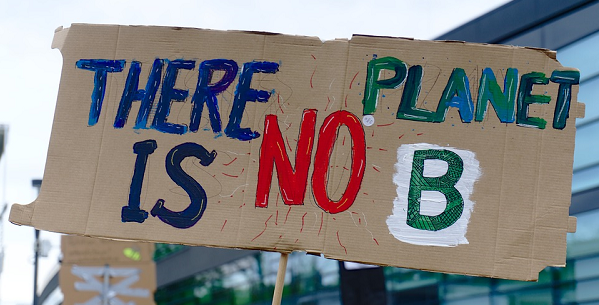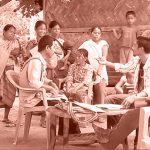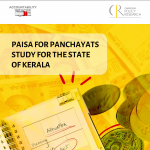
Youth Activism, the Climate Crisis and Civic Participation
25 October 2019
What began as a high schooler’s silent protest against ecological breakdown has now turned into a worldwide movement. Greta Thunberg, then 15, protested by sitting outside the Swedish parliament in 2018. Following the hottest summer Sweden had experienced in more than two centuries, her demands were that the government take the necessary steps to reduce carbon emission. These were in accordance with the Paris Agreement, which elaborates on measures governments could take to limit increase in climate change to 1.5 degree Celsius.
Post the elections, Greta began striking during school hours every Friday. Her persistence and deep seated discomfort with current political systems caught the eye of local reporters, and her social media presence on Twitter and Instagram also began to grow. Videos of her protest soon received thousands of views on YouTube. Similar organisations across the globe began recognising her efforts.
I remember reading one such post sharing a picture of Greta sitting outside the Swedish parliament with her board reading “school strike for the climate”. I was inspired by her persistence and her belief that change had to begin with us. Inspired by her actions students across other European countries such as Germany began organising similar school strikes. An estimated 20,000 students had participated in strikes in at least 270 different cities by the end of 2018.
An issue I consider to be an externality of everyday actions we take, I had not dared to address methods to reduce the ecological breakdown but had been an active voice with regard to living a more sustainable life. Like Greta, I too had taken to social media platforms such as Instagram to microblog about lifestyle changes I was making to reduce my carbon footprint. The application served as a great platform to discuss predicaments or my actions.
Youth activism on Twitter and Instagram have been on a constant rise. Aged 13 and upwards, the youth are engaging with various civic issues ranging from animal rights to political decisions being made by the government. Information on these platforms are designed to be consumed quickly and hence more convenient. Termed as ‘slacktivism’, this mode of thin engagement with political and social causes online has proven to have little significant effect. Studies suggest that these efforts don’t necessarily lead to policy changes as changing systems take longer than one is ready to commit to.
However, the ‘Fridays for Future’ (FfF) climate strikes have brought many online supporters to the streets. The official webpage tracks the strikes in real-time as they take place across the globe. With millions of participants, India has witnessed 161 ‘one-time’ strikes and a total of 433 strikes out of which 272 strikes are scheduled to take place in the near future. This indicates a growing number of young citizens, frustrated with aspects of governance, taking to the streets to demand better. Belonging to the urban elite, these students have traditionally not expressed their opinions in this manner.
The FfF strikes have mobilised thin online engagement to tangible engagement, on the streets. The thin engagement begins with liking a post or retweeting and then moves on to following accounts or posting content expressing one’s support. The next action on this range would be to join a strike happening ‘near you’ and may either stop there or may continue on to actions such as writing articles or even filing lawsuits. Greta and at least 15 fellow leaders have filed lawsuits against their respective governments claiming that their governments have been violating the UN Convention on the Rights of the Child.
The strikes intend to bring to the forefront the disastrous effects of climate change on Earth that the strikers are going to inherit. The strikes have a clear motive and are universal. Through them, the participating youth expect the governments to enforce rules and regulations necessary to limit the increase of temperature to 1.5 degree Celsius. Only time will tell if their tactics are efficient in holding governments accountable. But, as the youth continue to use social media platforms, they are engaging in civic conversations which could very well be a step to citizen participation in accountable governance.
Sidharth is a former intern at the Accountability Initiative. He is currently a postgraduate student at Sciences Po.





